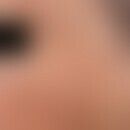Synonym(s)
DefinitionThis section has been translated automatically.
Occupational disease "Squamous cell carcinoma or multiple actinic keratoses of the skin caused by natural UV radiation". With the amendment of the Occupational Diseases Ordinance (BKV), BK No. 5103 was added to the list of occupational diseases as a new occupational disease on January 1, 2015. The recommendations for assessing the reduction in earning capacity(MdE) were drawn up by the "Bamberg Recommendations" working group.
The occupational disease no. 5103 is based on the finding that the rate of skin cancer (squamous cell carcinoma or multiple actinic keratoses) doubles if a 40% occupational (insured) UV exposure is added to the private (uninsured) natural UV exposure. This corresponds to around 30% of lifetime exposure.
If this threshold is exceeded, the disease can be recognized as an occupational disease from the point of view of exposure assessment.
ClassificationThis section has been translated automatically.
BK No. 5103 refers to epithelial skin tumors such as squamous cell carcinomas (BK 5103) including bowen's carcinoma and its early forms (carcinomata in situ), but not to basal cell carcinomas. Basal cell carcinomas do not currently fulfill the requirements of BK no. 5103). Actinic keratoses are to be regarded as carcinomata in situ. Bowen's disease is to be equated with actinic keratosis. Bowen's carcinoma is considered a squamous cell carcinoma under insurance law.
| MDE for BK 5103 in % | |||
|---|---|---|---|
| Tumor type | Disease activity/intensity | ||
| none/low | moderate | high grade | |
| Multiple actinickeratoses/field carcinomatization | <10 | <10 | 10 |
| Squamous cell carcinoma (+possibly further actinic keratoses and/or field carcinomatization) | <10 | 10 | 20 and >20 |
Note: Actinic keratoses > 5/year individually or confluent to an area > 4qcm are considered multiple
| Assessment of disease activity in multiple actinic keratoses and/or field carcinomatization | |
| none/low | New occurrence of < 6 actinic keratoses within 12 months |
| moderate | New occurrence of 6-12 actinic keratoses within 12 months or existence of field carcinomatization of 40-50 sq cm |
| high grade | New occurrence of > 20 actinic keratoses within 12 months or existence of one or more (clinically visible, relevant) field carcinomas of > 50 sq cm in total |
| Assessment of disease activity in squamous cell carcinoma and possibly also other actinic keratoses and/or field carcinization | |
| none/low |
Condition after treatment of one or more squamous cell carcinomas (PEKs) and
|
| moderate |
Condition after treatment of one or more squamous cell carcinomas and additionally either
|
| High grade |
Condition after treatment of one or more squamous cell carcinomas and additionally either
|
Note: The legal requirements for the recognition of basal cell carcinomas and melanomas as a result of natural or artificial UV radiation as BK No. 5103 are currently not available.
When assessing the reduction in earning capacity(MDE) for occupational skin cancer, the individual health impairment and its impact on the ability to work in the general labor market is evaluated. When assessing the MDE, the disease activity/intensity and the possible restriction of work opportunities resulting from reduced UV light tolerance are important (applies to BK no. 5102).
Furthermore, impairments that go beyond a functional restriction must be taken into account for work-related skin cancer diseases (BSG ruling of June 20, 2004; AZ: B2U14/03R). These include aspects of recovery time, possible long-term therapy, a pain syndrome requiring therapy, adaptation and habituation to the possibly reduced general condition, necessary rest to stabilize the state of health, psychological impairments, social adaptation problems, other psychosomatic coping problems.
For the medical assessor, the clinical picture, the course and documented findings of the treating physicians (especially histological findings) are decisive. Newly occurring skin changes must be checked to see to what extent they occurred as a result of occupational exposure or whether other factors were in the foreground. The MDE also includes cosmetic disfigurement or significant functional limitations due to the surgical removal of the tumors as well as any metastasis that may have occurred.
The degree of MDE is generally independent:
- the occupation previously practiced
- the previous level of qualification
- the age and gender of the injured party
- the place of residence of the person being assessed
To enable the accident insurance institution to verify the connection between the skin cancer and the occupational exposure, the dermatologist is usually asked to submit a skin cancer report(form F6120-5103) after the occupational illness report has been submitted. In the case of an existing treatment order, a follow-up report(form 6122-5103) is also submitted once a year at the request of the accident insurance institution.
You might also be interested in
Occurrence/EpidemiologyThis section has been translated automatically.
The 10 occupations with the highest UV radiation exposure** (extrapolated annual exposure value in SED*)
- Sewer builder (581)
- Stone crusher (531)
- Roof and facade builders (494)
- Carpenters (474)
- Road builders (469)
- Concrete worker (457)
- Roofer (444)
- Bricklayers (435)
- Steel construction fitters (434)
- Fruit and vegetable growers (395)
*SED = standard erythema dose - 1 SED is sufficient to trigger sunburn in skin type 1 (= light skin, reddish skin)
**Data according to DGUV: DGUV (July 2016)
TherapyThis section has been translated automatically.
A patient information sheet on the "Notification of a skin cancer disease caused by sunlight at work to the accident insurance carrier" can be obtained from the Arbeitsgemeinschaft für Berufs- und Umweltdermatologie: http://abd.dermis.net/content/e03abd/e10diensteinfo/e1114/Patinfo_Hautkrebs_2015.pdf
The calculation of occupational radiation is based on the so-called Wittlich formula. The determination of exposure in the BK determination procedure is usually carried out by the Prevention Service (PD) of the responsible UV carrier.
The Institute for Occupational Safety and Health of the German Statutory Accident Insurance (IFA) has published a "Technical Information" for the determination of work-related UV exposure from the sun. This contains detailed information on the calculation of natural, work-related UV radiation exposure and is available on the IFA website(www.dguv.de/dghv/ifa/fachinos/strahlung/optische-strahlungg-idex.jsp).
For the causality assessment, the total, lifelong exposure to UV radiation up to the onset of skin cancer is of importance. It is therefore necessary to determine non-work-related UV exposure together with the type, extent, intensity and duration of work-related exposure to UV radiation.
Skin types: The presence of a specific light skin type according to Fitzpatrick is basically irrelevant for the assessment under insurance law. In the case of §3-BKV measures, however, the skin type can play a role in the question of suitable skin protection measures.
Competing factors and risk factors: For an insurance law situation, risk factors (genetic factors, pigment disorders, prolonged drug immunosuppression, etc.) can play a role in the development of skin cancer types. It is recommended that a retrospective disease dossier covering a period of 10 years be drawn up. The private (uninsured) UV exposure is calculated as the product of the age of the insured at the time of the confirmed initial diagnosis and the average annual UV radiation.
The SED (Standard Erythema Dose) is used as a benchmark. 1 SED corresponds to 100J/qm. The average annual exposure of the German population is 130 SED. For the photobiological (here carcinogenic effect) effect of UV radiation, the radiation intensity (expressed as irradiance E), the level of UV exposure (irradiation H) and its wavelength are important. For the insurance law situation of BK-5103 only the natural UV radiation of the sun plays a role, not UV radiation from artificial sources (e.g. welding or UV curing etc.).
When exposed to natural UV radiation, the irradiance is influenced by the following factors:
- the season (higher in summer than in winter)
- the time of day (at midday, when the sun is high in the sky, the irradiance is highest)
- the geographical latitude (increase of the midday sun elevation the closer to the equator)
- the altitude (the higher the irradiation site, the higher the irradiation intensity)
- from the surroundings (increase in reflection due to snow, light sand, dry concrete; decrease due to shady terrain)
Checklist for the testing of a skin cancer after UV exposure (DGUV work aid "Skin cancer caused by UV radiation")
Requirement, mandatory
- Squamous cell carcinoma, Bowen's carcinoma, Bowen's disease, multiple actinic keratoses, if possible histologically confirmed
- Localisation of the disease matches the occupational exposure
- work-related stress (in terms of type, duration, intensity, extent) corresponds to at least 40% of the non-work-related (private) stress
Supplementary requirements
- signs of chronic light damage in the affected area
- Signs of chronic light damage only in work-related exposed areas
- common UV radiation exposure in leisure time
- usual UV radiation exposure during vacation
- Sunburn during professional activity
- hardly any sunburns outside the workplace
§3-Measures and treatment
Preventive measures can provide effective protection against UV exposure. As a result, the development, aggravation or resurgence of a skin cancer disease is counteracted in the sense of this work aid.
The duty to protect insured persons from the consequences of natural and artificial UV radiation is basically the responsibility of the employer (§3 ArbSchG). The special disposition as well as previous damages of the insured persons are to be taken into account appropriately.
The accident insurance institutions are subordinated. They only take measures in accordance with §3 BKV if there is a concrete danger for insured persons that a (how- or quasi-) occupational disease "skin cancer" develops, revives or worsens.
Individual preventive measures are indicated. The costs of (skin) medical treatment, on the other hand, can usually only be covered once an occupational disease has been recognised. The physician must be notified of the time of coverage with the treatment contract. Until then, the medical treatment including the necessary follow-up care is carried out at the expense of the respective health insurance company in accordance with paragraph 11, section 5 SGB V.
Note(s)This section has been translated automatically.
For basal cell carcinomas and melanomas, there is currently insufficient evidence that occupational solar UV exposure significantly increases the risk of disease.
According to current occupational dermatological opinion, keratoacanthoma is not recognized as part of BK 5103.
LiteratureThis section has been translated automatically.
- Bauer A et al (2016) Skin cancer as an occupational disease. Dermatologist 67: 884-890
- Braakhuis BJ et al (2003) A genetic explanation of Slaughter's concept of field cancerization: evidence and clinical implications. Cancer Res 63: 1727-1730
- Diepgen TL et al. (2015) Reduction of earning capacity in BK 5103 " Squamous cell carcinomas or multiple actinic keratoses of the skin by natural UV radiation "Dermatology at work and in the environment" 63: 3-7
- DGUV work aid "Skin cancer due to UV radiation". www.dguv.de/ifa
- Slaughter DP et al (1953) Field cancerization in orally stratified squamous epithelium; clinical implications of multicentric origin. Cancer 6: 963-968
Incoming links (7)
Bk 5103; Bk display; Field carcinogenesis; Occupational diseases; Occupational skin disease according to BK 5101; Occupational skin disease according to BK 5101; Skin cancer of occupational;Outgoing links (9)
Actinic keratosis; Basal cell carcinoma (overview); Bowen's carcinoma; Field carcinogenesis; Mde; Melanoma cutaneous; Skin types; Squamous cell carcinoma of the skin; Wittlich's formula;Disclaimer
Please ask your physician for a reliable diagnosis. This website is only meant as a reference.




